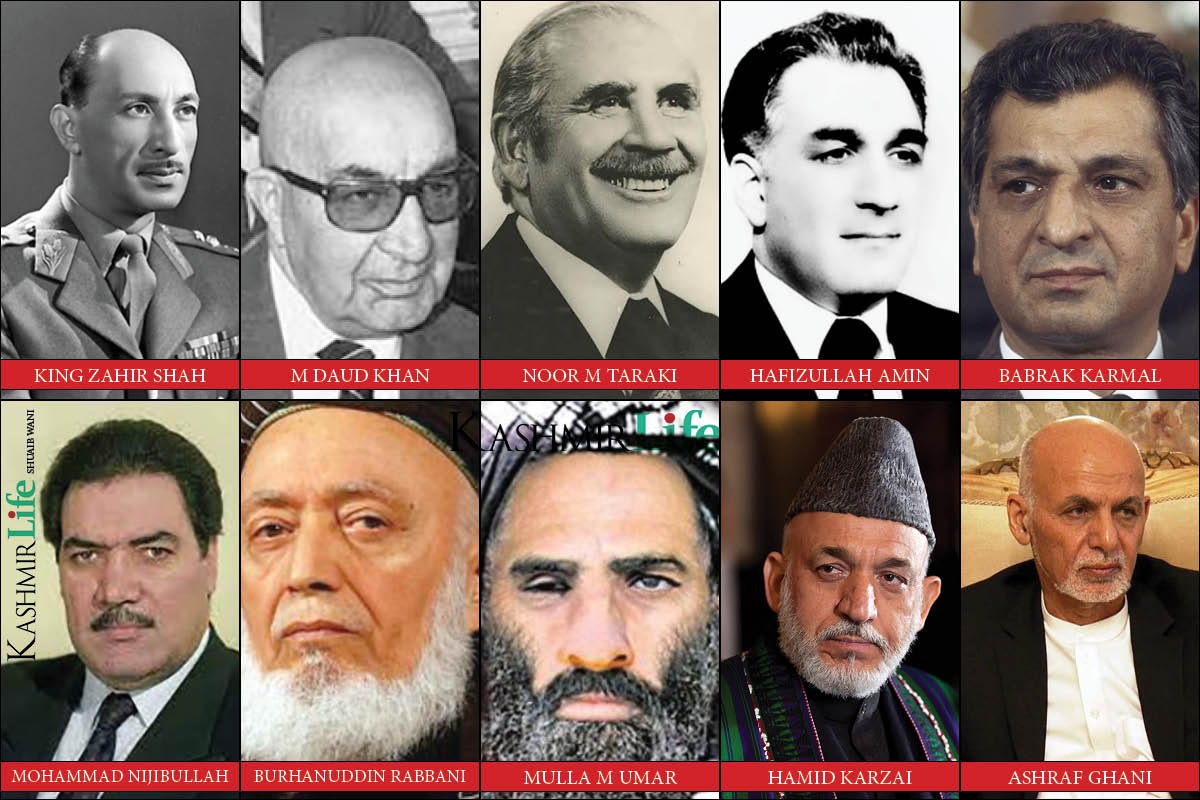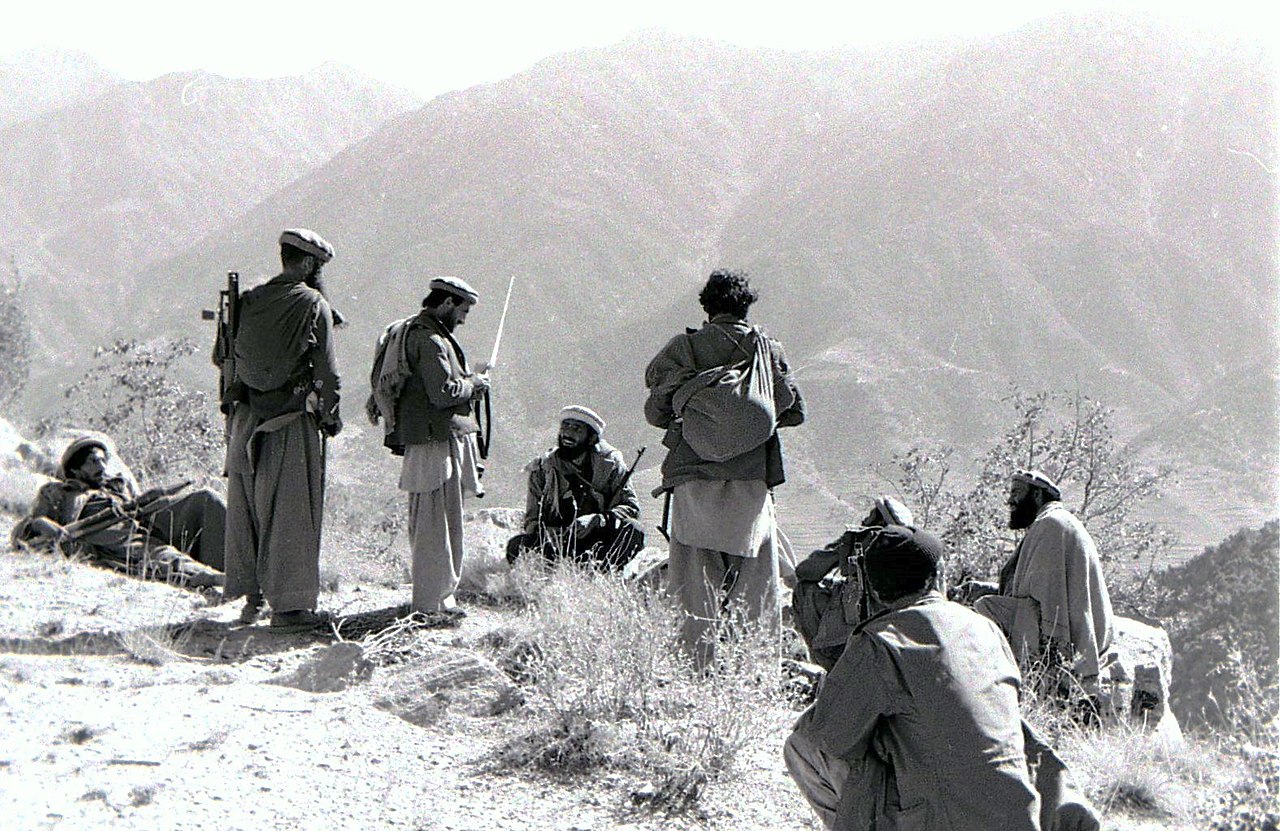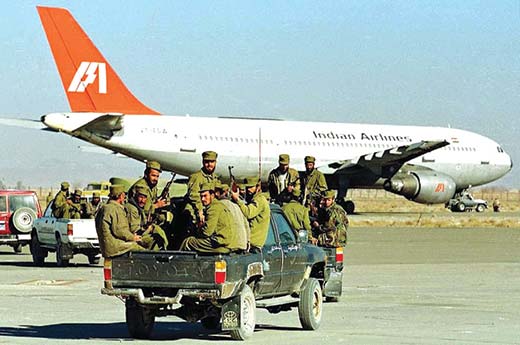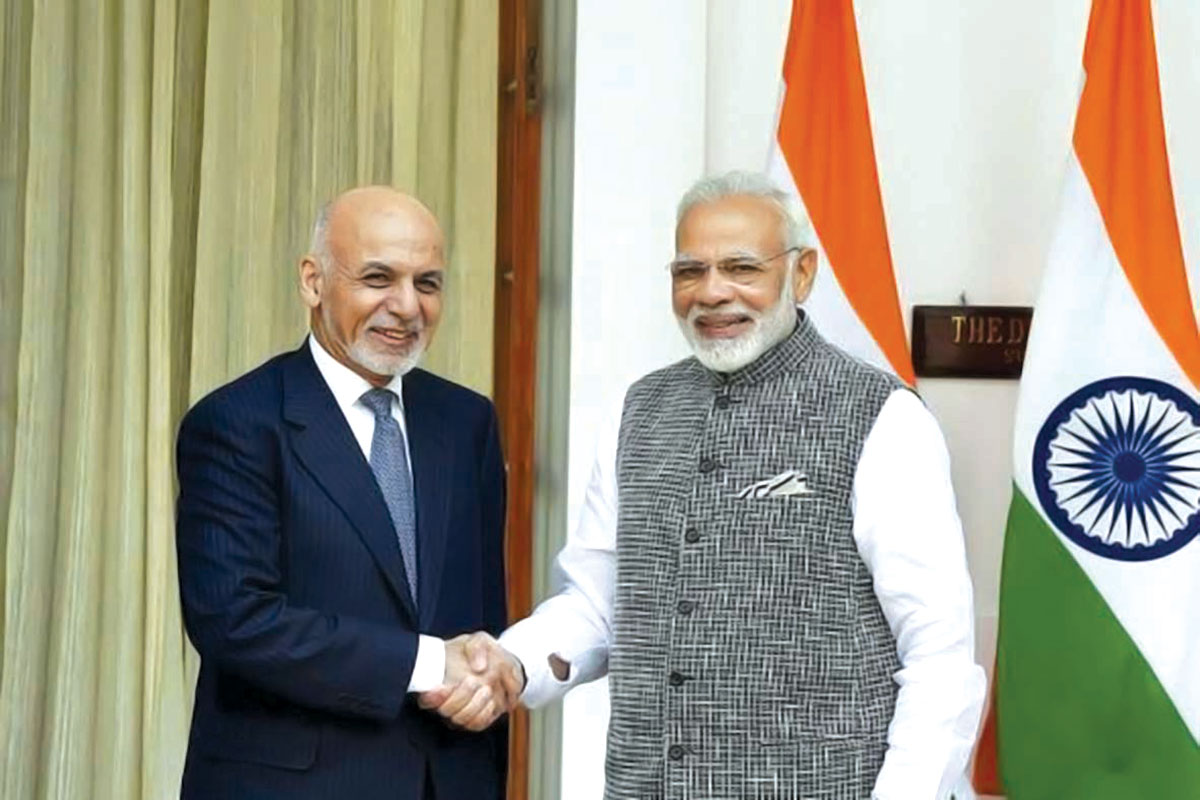Described as the ‘Graveyard of Empires’, Afghanistan was always termed to be at peace when it was at war. But the land-locked desert country that was always in turmoil and one of the worst targets of the Great Game suffered immensely throughout, especially in the last 40 years, Masood Hussain writes

Before the American troops and their NATO allies landed in Afghanistan, days after the 9/11 twin tower attack in 2001, Afghans’ respected Americans. They had helped them fight the Soviet occupation through Pakistan and literally undo the USSR. The Kabul-Washington relation had evolved over the decades if not centuries.
Individual Contacts
There might have been a lot of contacts between the two cultures separate by faith and high seas but the first recorded one was somewhere in the 1830s when Josiah Harlan, an American adventurer and a Pennsylvania political activist sailed to India with the wildest imagination of becoming the King of Afghanistan.
Soon after his arrival, the situation in the region evolved so fast that becoming a king of Afghanistan seemed not a tall order. There were two claimants to the Durrani throne – Shuja Shah Durrani and Dost Mohammad Khan. This led to the first war between British India and Afghanistan, known as the First Anglo-Afghan War (1838–1842). The war, however, was not an ordinary one. From around 16500 invading the British army, only one returned home alive – Dr William Brydon.
Before the war, Harlarn had worked for both the claimants and is credited for fighting many battles for Dost Mohammad till he became the Prince of Ghor. Harlarn is the one around whom Rudyard Kipling’s short story, the man who would be king was written. In 2002, Ben Macintyre, an editor at The Times London authored an extensive book The Man Who Would Be King: The First American in Afghanistan. This marked the beginning of contact between the two nations.
The second contact is barely a century old when in 1911, a former General Electric employee, AC Jewett reached Afghanistan with a modest objective of building a powerhouse in Kabul. He became the Chief Engineer for King Habibullah Khan and helped electrify parts of Jalalabad and Kabul.
Diplomatic Contact
British managed to create a friendly regime in Afghanistan after the Second Anglo-Afghan War (1878–80) but the protectorate rebelled in 1919 (the third Anglo-Afghan War) that eventually led the Empire to surrender Afghanistan’s foreign affairs, the only authority they had had for around four decades.
Somewhere in 1921, Afghanistan signed the Treaty of Rawalpindi with British India. Afghan diplomats visited the American mission and sought to establish diplomatic contact. The then US President Warren G Harding sent his good wishes to Kabul and some aid started flowing to the desert country.
The diplomatic contact was established but the American envoy would operate from Tehran. William Harrison Hornibrook was the envoy in absentia for two years till 1936. Louis Goethe Dreyfus served for another two years till 1942. Then Americans started travelling to the region with Major Gordon Enders becoming the first military attaché to Kabul, followed by Cornelius Van Hemert Engert represented and Ely Eliot Palmer between 1945 and 1948.

The Onset of Cold War
The onset of the cold war between the USA and the USSR marked the beginning of a stronger relationship as US President Harry S Truman visualised. Kabul sent Habibullah Khan Tarzi as the first full-fledged ambassador to Washington in 1953 and the US Louis Goethe Dreyfus as its Ambassador to Afghanistan from 1949 to 1951.
In 1953, Richard Nixon, then the Vice President, flew to Kabul, met residents and strolled around. Five years later, Afghanistan Prime Minister Daoud Khan spoke to US Congress in Washington in 1958. During this visit, he met President Eisenhower, signed a cultural exchange agreement. Though Khan sought defence cooperation, Washington preferred economic assistance.
It was the era of the Cuban crisis. During the Cuban Revolution between 1953 and 1959, the USSR would support Fidel Castro, and the US would focus on Afghanistan, as its strategic partner in the region as the desert country was in the immediate vicinity of the USSR. The idea was to checkmate Communism. It was simply because of these compelling factors that President Eisenhower flew to Kabul in December 1959. Landing at the Bagram Airfield, Eisenhower drove in a huge cavalcade to Kabul, where he met King Zahir Shah, his Prime Minister Daoud Khan and other Pathan notables.
In 1963, the Kabul king went on a return visit. This visit helped Kabul to cement its relations with the John F Kennedy administration. Habibullah Karzai, Hamid Karzai’s uncle, was part of the king’s team.

This marked the beginning of the American coffers opening up for Kabul. Till 1979, Kabul got US assistance of more than US $500 million in grants and loans, mostly for social sectors.
All these developments had led Kremlin to believe that Washington was converting its neighbour into her client state. So in 1965, it encouraged its comrades in Kabul to lay the foundation of the People’s Democratic Party of Afghanistan (PDPA), a local community party unit.
The American’s, however, did not give up. They would always keep their ally in news. Americans would aggressively deploy their professionals to work in Afghanistan for most of the 1970s. Countless American social groups were busy in Kabul. All these interventions led to the creation of key infrastructure including 4000 km of tarmacked strategic roads, the Kazaki Dam, near Kandahar; and two large airfields, one at Bagram and the other at Kandahar.
The Communist Control
Americans would offer Kabul everything but always denied them arms, unlike Pakistan. This was a perpetual crisis in Kabul. Armed by Moscow, then a strong Delhi ally, Zahir Shah’s Prime Minister Dawood Khan sent troops into Pakistan to manipulate the areas beyond Durand Line in 1960. Kabul has historic claims over ethnic Pashtun belts and had not accepted Pakistan as a nation in the UN in 1947. When the Afghan army crossed the Durand Line, Pakistani tribal’s beat them into retreat. Unrelenting, Khan mounted yet another campaign in 1961 and this time, Pakistan F-86 Sabres jets decimated them. An angry Pakistan closed the borders with land-locked Afghanistan, pushing Kabul literally in the USSR lap. Moscow liberally helped Kabul but the roadblock had its impact on the ground.
The roadblock embarrassed the king and these differences eventually led Khan being forced to resign in 1963, following which Pakistan reopened the road. A decade later, Khan with the help of the army ousted the king and became the President. His autocratic rule remained pro-Moscow as it revived tense relations with Islamabad. One of his famous lines describing him as well as his erstwhile master Zahir Shah was that his happy moment is when he “lights his American cigarettes with Soviet matches”.

On the night of April 28, 1978, PDPA gangs massacred him and his family in the Presidential Palace and took over the control of Afghanistan. (The slain were discovered in two mass graves – 16 in one and 12 in another, outside a prison on June 28, 2008, and an investigation established them to be Khan’s family resulting in an official funeral on March 17, 2009.) This massacre like every other massacre in Communist history was recorded as “revolution”, the Saur revolution.
PDPA had three big leaders, Nur Mohammad Taraki, Hafizullah Amin and Sultan Hussain, the Kashmir origin Tajik Pashtun, known to history as Babrak Karmal. It was Taraki who became the new master of the ‘Communist’ Afghanistan. However, he soon fell with Amin. The two friends played a cat-and-mouse game till, on Amin’s orders; three men used pillows to suffocate Taraki to death on October 8, 1979, and he was given a secret burial.
Amin unleashed repression and became a liability for the Kremlin. They poisoned him (December 13, 1979) but an embassy doctor, not briefed in anticipation about the KGB operation, saved him. They pressed into service a sniper but somebody else got the bullet. Finally, when USSR troops invaded Afghanistan, a KGB agent was assigned the job of poisoning him. Amin took the poison but had consumed a lot of Coca-Cola that diluted the poison! This forced a physical assault in which he was eliminated along with his son. Those who survived remained in jail till 1992.
The Invasion
The year 1837 was perhaps the first recorded date when a Russian aided Persian attempt was made to annex Herat. In order to have access to warm water ports, Moscow intended to weaken the surging British Empire. Initially interested in taking over various Khanates in central Asia, Russia never gave up its interest in Afghanistan since 1919. It used trade, support, loan and military hardware to annex Kabul.
The political manipulation made Moscow the remote controller of Kabul power to the extent that it would kill the rulers at will. The Soviet Politburo finally took umbrage in the fascist methodology of Amin to crossover and take control over Kabul in 1979 and install Karmal within two days as its new puppet ruler, who saw an investment of around the US $800 million in less than a decade.
It was not an ordinary event. The Americans took some time to respond to the shocking event.
The Jehad
Finally, the USA’s CIA joined hands with a more than willing Pakistan spy agency ISI and it marked the twentieth century’s textbook response to the occupation. All of a sudden, the world started listening to the valour of Afghan Mujahedeen. Hosting almost four million Afghan refugees, Pakistan became the base camp for the resistance. Though Pakistan was involved in supporting Afghan militia’s since the ouster of Zahir Shah by a pro-Soviet Dawood Khan, the American partnership took the process to the next level.

The Afghanistan war saw a sort of common interests emerging between various nations – for Afghan’s, fighting occupation was part of the culture; for Pakistan becoming a voluntary partner was to get experience, resources and influence and obviously preventing Communism from swallowing it in the next stage. Then, USSR was India’s major ally. For American’s fighting USSR was to checkmate Communism, safeguard her interests and send a message elsewhere that it can go an extra mile for its allies. For most of the Muslim Middle East, fighting atheists’ was a matter of faith.
This huge common interest led to billions of dollars of military hardware land in Pakistan, which utilised (part of) it to arm the Afghan marshal human resource and fight the USSR. Conservative estimates suggest that Americans’ spent more than US $ 600 million on Afghan refugees, almost US $ 3 billion on Mujahedeen, and around US $ 5 billion in bilateral aid to Pakistan.
The continuous failure by USSR’s Kabul regime was eventually blamed on Karmal. Gradually he was pushed towards resignation and after a series of failures by the KGB; he was ousted in November 1986 and exiled to Moscow as Najibullah succeeded him. He died in a Russian Hospital of liver cancer in December 1986.
Eventually, it proved a successful Jehad. The USSR withdrew on February 15, 1989. In the almost decade long occupation, however, a country was destroyed and its 11 per cent population (around 20 lakh people), including 90,000 Mujahedeen perished in the war. In retaliation, USSR lost 15000 soldiers, as more than double survived injured and 18000 Afghan troops were annihilated. Russian fled Afghanistan leaving the desert country under Najibullah’s titular control.
Fighting Mujahedeen
It was the Afghan army fighting the Mujahedeen with Moscow support that successfully restricted them to the Herat and Kandahar belt. Islamabad continued supporting them. Then Moscow support gradually reduced and eventually stopped. Despite the initial gain, the Najibullah government would hardly control around 10 per cent of Afghanistan by 1991.
On December 25, 1991, USSR collapsed and the Soviet hammer and sickle flag lowered for the last time over the Kremlin. This marked the end of any Russian support to Najibullah. As the support dried up, the Afghan Air Force was grounded for lack of fuel. On March 18, 1992, when a tired Najibullah offered to resign, his allies got a hint. Rashid Dostum dumped Najibullah and joined the Mujahedeen ragtag coalition piloted by Ahmad Shah Massoud. On April 14, Najibullah was forced to give up and was replaced by Abdul Raheem Hatif’s weak regime.
Najibullah wanted to take asylum in India but Delhi refused. He was even denied shelter in India’s Kabul embassy and eventually UN gave him shelter in its Kabul mission.
Islamic State
By then, seven major Mujahideen groups cobbled a coalition that defeated Hatif and took over Kabul. This was the outcome of the power-sharing Peshawar Accord signed on April 25, 1992, leading to the installation of the Burhanuddin Rabbani government. Interestingly, however, Gulbuddin Hekmatyar stayed out and continued his battle against the government. He eventually joined as Prime Minister in 1993.
Taliban Rises
After achieving its objectives, Washington exhibited indifference. The interest was revived only after the Americans sensed the quantum of wealth in the newly independent Central Asia States by way of oil and natural gas. It wanted a favourable government in Kabul to support the gas pipeline from Turkmenistan to Pakistan.
By then, the war had devastated the country and the gangs were operating with impunity as the authority of the government was challenged everywhere. Apparently, the Taliban movement emerged in reaction to two local commanders of the incumbent government raping a young girl. They found the duo and hanged them eventually.

The new force emerging from the seminaries of Pakistan took Afghanistan by storm. Starting in late 1994, it took over Kabul in September 1996, pushing the Rabbani government to the North. After the public hanging of Najibullah (September 27, 1996), it laid the foundation of the Islamic Emirate of Afghanistan. Most of the world did not recognise the Taliban government led by Mulla Mohammad Omar and instead continued supporting Rabbani’s government in exile.
The NATO Regimes
After 9/11/2001 when twin WTO towers were destroyed by two civilian aircrafts, the US intervened with the objective to hunt down Osama bin Laden. The subsequent days saw the emergence of NATO supported regimes. After surviving a “friendly” missile fire by the US Air Force, Hamid Karzai became the President of an interim government in June 2002. Later, he won two presidential terms and literally ruled till September 2014, when Ashraf Ghani replaced him.
Taliban continued fighting the NATO troops and the regimes they installed. On February 29, 2020, the USA signed a peace deal with the Taliban in Doha that set the deadline for NATO withdrawal.

Americans occupied Afghanistan for more than double the time the Soviets could retain it. The costs it paid were upward of US$ 3 trillion. Those killed included 2448 US troops, 3846 US contractors, 1144 soldiers from other NATO members, 66000 Afghan soldiers, 47245 Afghan civilians and 51191 Taliban and other Afghan fighters.
Well before that Taliban recaptured the country in bloodless and swift advances. Ashraf Ghani, a former World Bank executive, fled the country after handing over the power to the Taliban on August 15, 2021. Thus started the Taliban 2.0 in Kabul.















